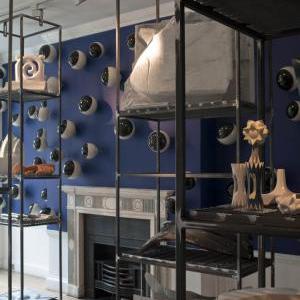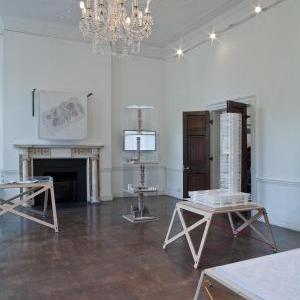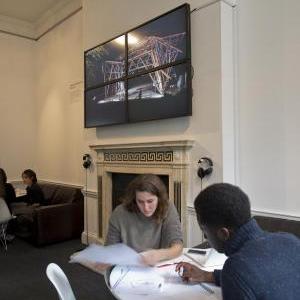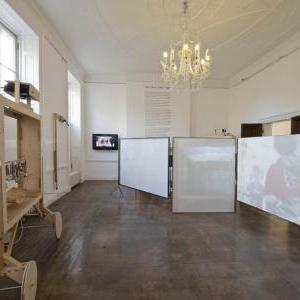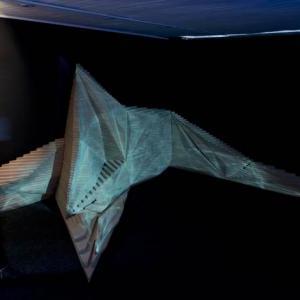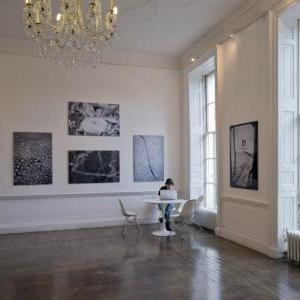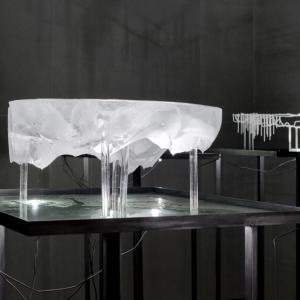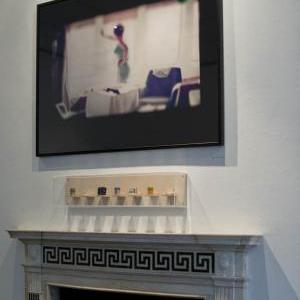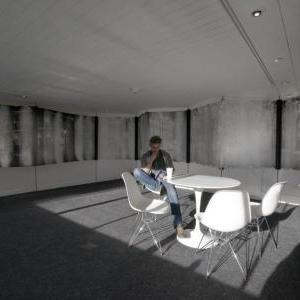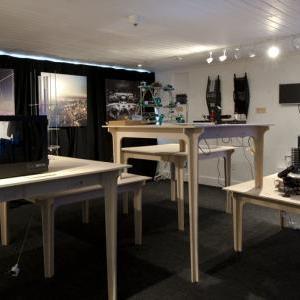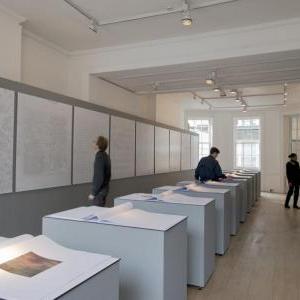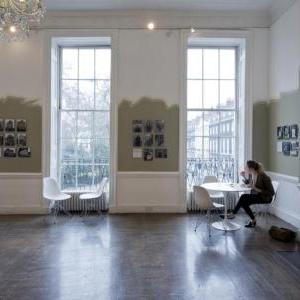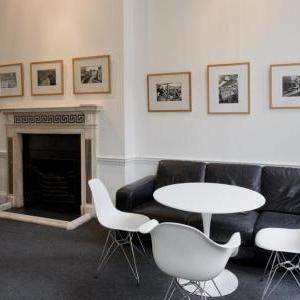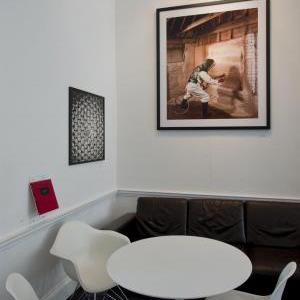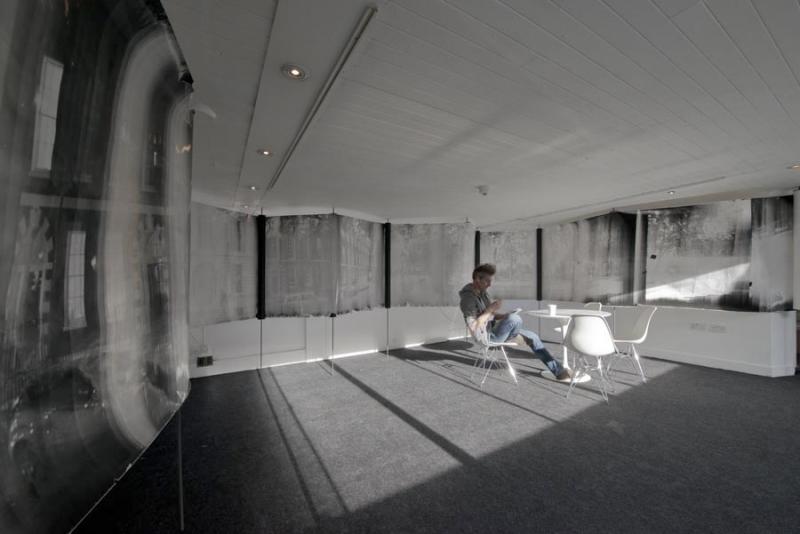From Ceràmica Cumella: Shaping Ideas – an exploration of the artistic and scientific innovations emerging from the studio of Toni Cumella – to Frozen Relic: Arctic Works – a series of re-fabricated real world scenarios using millimetre perfect 3D scanning technology to stage and capture transitory moments on location across the world – the AA's year-long exhibition programme casts a wide net across geographies, histories and cultures to investigate the realm and role of architecture and its unique relationship to the school.
Head of Exhibitions
Vanessa Norwood
Exhibitions Project Manager
Lee Regan
Exhibitions Coordinator
Sebastian Craig
Camera Obscura
Back Members' Room
12/1/2013 - 9/2/2013
By Lili Carr and Elliot Rogosin
On 22 October 2011 an inhabitable thing, at once a small room and large camera on wheels, tracked the day in Bedford Square from morning to evening to night.
Exposing the large format photosensitive paper concealed there, beneath a trapdoor in the floor, 8 hours and 200 degrees was traced over 15 by 1.3 metres.
The very first camerae obscurae were pinhole cameras (a hole in a completely light-sealed room) built during antiquity. Just like the camera obscura in the Royal Observatory in Greenwich, we used a lens to allow for a brighter, sharp, projection: the scene was reflected in a mirror, and then projected onto a white reflective surface – the floor.
Many artists from the Renaissance onwards used a camera obscura to trace a scene quickly and accurately. Two artists famous for their attention to detail, Vermeer, the seventeenth-century Dutch painter, and Canaletto, known for his portrayal of eighteenth-century Venice, must have used this device to sketch scenes directly onto their canvasses.
We used the camera obscura to take a permanent photograph, a panorama, developed as a continuous piece a little over a year later.
This exhibition displays the result.
Exhibition photos by Sue Bar
